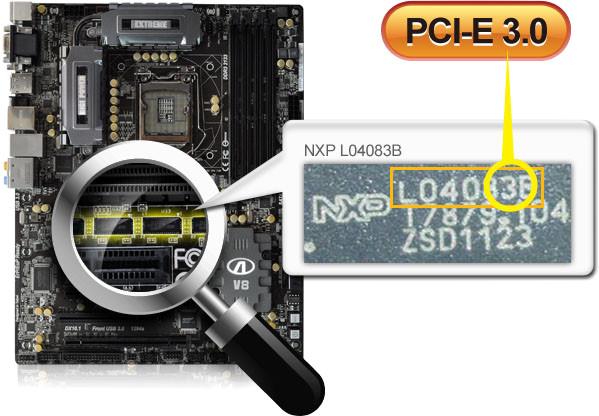- Related articles
- All Cisco GLC-BX40-D-I's information (List price, Specs, Datasheet PDF, Compatibility matr
- Difference between transponder and muxponder
- Optical Transceivers for Cisco WS-C2960X-48LPS-L Switch
- All Cisco ONS-SC+-10G-SR's information (List price, Specs, Datasheet PDF, Compatibility ma
- All Cisco XFP-10GER-OC192IR's information (List price, Specs, Datasheet PDF, Compatibility
- Optical Transceivers for Cisco WS-C3560V224PSS-RF Switch
- Apply to 1000BASE-LX Standard Optical Transceiver Models
- Difference between XENPAK and GBIC
- All Cisco GLC-TE's information (List price, Specs, Datasheet PDF, Compatibility matrix)
- All Cisco ONS-SI-GE-SX's information (List price, Specs, Datasheet PDF, Compatibility matr

Experienced PCI - E 2.0 era, the arrival of the PCI - E 3.0 data will lead to higher bandwidth and lower power consumption, it is possible to implement SSDs with PCI-E interfaces in the future, allowing data throughput greatly increased.

PCI-E 3.0 also adds a 128b / 130b decoding mechanism to ensure almost 100% transmission efficiency, compared to the previous version of the 8b / 10b mechanism to enhance the 25%, thus contributing to the transmission bandwidth doubled, continuing the PCI- E norms of the tradition.
The difference between PCI-E 2.0 and PCI-E 3.0
The biggest difference between PCI-E 2.0 and PCI-E 3.0 is a significant increase in data throughput. PCI-E 2.0 in the signal strength of 5GT / s, so that to achieve a 500MB / s data throughput. Thus a lane data path, is defined as x1, its data transmission capacity is 500MB / s. Therefore, with PCI-E 2.0 x16 specifications, which means that it has 16 lane data path, it can achieve 8GB / s data throughput. The PCI-E 3.0, these data transmission capacity has been doubled again. PCI Express 3.0 signal strength of 8GT / s, can achieve 1GB / s data throughput.
|
PCIe Architecture |
Raw Bit Rate |
Interconnect bandwidth |
Bandwidth Per Lane Per direction |
Total Bandwidth for x16 Link |
|
PCIe 3.0 |
8.0GT / s |
8Gb/s |
1GB/s |
32GB/s |
|
PCIe 2.0 |
5.0GT / s |
4Gb/s |
500MB/s |
16GB/s |
Follow-up specification of PCI - E 3.0





































































